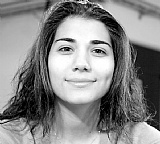Introduction
The evolution of the Danish language is a fascinating journey through history, culture, and linguistic shifts. Danish, a North Germanic language, has roots stretching back to the Iron Age and has undergone significant changes to become the language spoken in Denmark today.
Early Beginnings: Old Norse Influence
The Danish language traces its roots back to the Iron Age, specifically to the Old East Norse dialect of the Old Norse language family. This early form of Danish was spoken by the inhabitants of what is now Denmark and parts of Sweden during the Viking Age, a period that stretched roughly from the late 8th century to the mid-11th century.
Old Norse, the ancestor of all North Germanic languages, including Danish, was a language used extensively by the Vikings in their travels and conquests. This widespread use helped establish Old Norse as a significant linguistic influence in the Scandinavian region and beyond.
One of the most remarkable features of this era was the runic inscriptions. The Vikings used a writing system known as the runic alphabet, which they carved on stones, jewelry, weapons, and various artifacts. These runes offer invaluable insights into the language, culture, and practices of the Viking Age. The inscriptions in Denmark and southern Sweden predominantly feature the Old East Norse dialect, providing crucial evidence of the language's early form.
The linguistic characteristics of Old East Norse included specific phonetic and grammatical features that distinguished it from other Old Norse dialects. For example, the sound changes that occurred during this period were different from those in Old West Norse (which evolved into modern Icelandic and Faroese). These early phonetic shifts played a foundational role in the development of the Danish language.
Moreover, the Viking Age was marked by extensive interactions with other cultures and peoples, including the Anglo-Saxons in England and the Franks in what is now France and Germany. These interactions likely influenced the Old East Norse dialect, contributing to its evolution.
By the end of the Viking Age, as the Scandinavian countries began to form more cohesive political entities, Old East Norse started to evolve into distinct languages, including Old Danish. This transition marked the beginning of a period where the Danish language would start to acquire its unique characteristics, setting the stage for its further evolution in the Middle Ages.
The transition from Old East Norse to Old Danish signaled the end of the Viking era in linguistic terms and the beginning of a more localized and distinct linguistic identity for Denmark. This period laid the groundwork for the profound changes that the Danish language would undergo in the subsequent centuries.
The Middle Ages: Transition to Old Danish
As we move into the Middle Ages, around the 12th century, Old East Norse gradually evolved into Old Danish. This transition marked significant phonetic and grammatical changes. The introduction of Christianity to Denmark brought with it Latin, which influenced the language, leading to the adoption of new words and phrases.
The Influence of Low German
The influence of Low German on the Danish language is a significant chapter in its evolution, especially during the era of the Hanseatic League's dominance in Northern Europe, from the late Middle Ages to the early modern period. The Hanseatic League, a vast network of merchant guilds and market towns, played a pivotal role in shaping trade and commerce across the Baltic and North Sea regions.
Low German as a Lingua FrancaDuring this time, Low German emerged as the lingua franca of trade, not only in the Hanseatic League but also across Northern Europe. Its prominence was due to the powerful economic and political position of the Hanseatic cities, such as Lübeck and Hamburg. As Danish merchants and craftsmen increasingly interacted with their Low German-speaking counterparts, the Danish language began to absorb numerous loanwords from Low German.
Linguistic BorrowingsThe borrowings from Low German were primarily in domains related to trade, maritime activities, crafts, law, and administration. For instance, many terms related to seafaring, commerce, urban life, and craftsmanship found in modern Danish can be traced back to Low German origins. These include words like 'kræmmer' (merchant), 'havn' (harbor), and 'borgmester' (mayor).
Impact on Grammar and SyntaxApart from vocabulary, the influence of Low German extended to certain aspects of grammar and syntax. While not as profound as the lexical influence, there were subtle shifts in the usage of prepositions and sentence structure, aligning more closely with Low German conventions in some regions of Denmark, especially those engaged heavily in Hanseatic trade.
Cultural and Social InfluenceThe linguistic influence also mirrored broader cultural and social interactions. Towns that were part of the Hanseatic trade network often had significant populations of Low German speakers, which further facilitated the blending of languages. This period was marked by a heightened exchange of ideas and cultural practices, where language played a crucial role.
Decline of Low German InfluenceAs the Hanseatic League's influence waned and Danish emerged stronger in the 16th and 17th centuries, particularly after the Reformation, the direct impact of Low German began to diminish. However, its legacy remained entrenched in the Danish vocabulary and had a lasting effect on the development of the language.
The Low German influence on Danish is a perfect example of how languages evolve and are shaped by economic, political, and cultural forces. This period in the history of the Danish language highlights the dynamic nature of linguistic evolution, driven by human interaction and exchange.
The Reformation and the Rise of Danish
The Protestant Reformation in the 16th century was a turning point in the history of the Danish language. This period marked not just a religious transformation in Denmark but also a linguistic revolution that would lay the groundwork for modern Danish.
The Role of the Church and the Translation of the BibleThe key catalyst for this linguistic shift was the translation of the Bible into Danish. Before the Reformation, Latin was the language of the Church and of scholarly pursuits. However, with the spread of Lutheran ideas, there was a growing emphasis on making religious texts accessible to the general populace. In 1524, the New Testament was translated into Danish by Christiern Pedersen, marking a significant step in bringing the language to the forefront of religious and cultural life.
Hans Christian Andersen's ContributionThe complete translation of the Bible by Hans Christian Andersen in 1550 was a monumental achievement. This translation not only made religious texts more accessible to the Danish people but also established a standard for the Danish language. The Bible translation influenced the development of a more uniform written form of Danish, which was crucial for the language's evolution.
Impact on Education and LiteratureThe Reformation's emphasis on reading the Bible led to an increase in literacy rates among the Danish population. This surge in literacy had a profound impact on the Danish language, as it increased the demand for books and written materials in Danish. Consequently, the 16th and 17th centuries saw a significant rise in Danish literature, further cementing the language's status and fostering its development.
Standardization and CodificationThe translation of the Bible and the subsequent increase in literature contributed to the standardization and codification of Danish. Grammars and dictionaries started to appear, aiming to set rules and norms for the language. This period marked the beginning of the transition from Middle Danish to Early Modern Danish, with changes in spelling, pronunciation, and grammar becoming more formalized.
The Danish Language in AdministrationThe Reformation also had implications for the Danish language in administration. As Denmark moved away from the Catholic Church, the use of Latin in official documents diminished. Danish began to replace Latin as the language of administration and law, further elevating its status in Danish society.
18th and 19th Century: Linguistic Purism
The 18th and 19th centuries witnessed a rise in linguistic purism in Denmark. There was a concerted effort to purge the language of foreign influences, particularly German. This period saw the development of new Danish words and the revival of older ones, shaping the language further.
20th Century to Present: Modern Danish and Its Global Influences
The 20th century marked a pivotal era for the Danish language, characterized by rapid societal changes and global influences. This period saw Denmark's transformation from a primarily agricultural society to a modern, industrialized nation, which had profound implications for the language.
The advent of mass media – radio, television, and later the internet – played a crucial role in shaping modern Danish. These technologies not only brought different dialects into closer contact but also introduced a plethora of new vocabulary. The language began to incorporate words related to new inventions, technologies, and cultural phenomena, many of which were borrowed from English.
English InfluenceArguably the most significant external influence on Danish during this period came from English. As the global lingua franca, English permeated various aspects of Danish life, particularly in areas like technology, entertainment, business, and science. This led to the adoption of numerous Anglicisms in everyday Danish, a trend that some language purists viewed with concern.
Educational reforms in the 20th century, especially the emphasis on universal access to education, played a significant role in standardizing the Danish language. As education became more widespread, so did the use of a more standardized form of Danish. This process helped to bridge the gap between various dialects and the standard language, although regional dialects continued to thrive.
Danish literature and arts continued to enrich the language, introducing new words and expressions. The works of prominent Danish authors, poets, and playwrights not only reflected the linguistic trends of their times but also influenced the way the language evolved.
In the latter part of the 20th century and into the 21st, globalization brought about a greater awareness of other cultures and languages in Denmark. This multicultural influence introduced new concepts and words into Danish, particularly from languages such as Arabic, Turkish, and languages of the Indian subcontinent, due to immigration.
The digital age has accelerated language change, with Danish absorbing new tech-related terms. Social media and the internet have also influenced the way Danish is used, especially among younger generations, leading to new slang, abbreviations, and even grammatical trends.
Future Outlook
As we look to the future, the Danish language continues to adapt and evolve. While it retains its core grammatical structure and rich vocabulary, it is increasingly influenced by international trends, technology, and global communication. The ongoing interplay between preserving linguistic heritage and embracing new influences is what will continue to shape Danish in the years to come.
The evolution of Danish in the 20th century and beyond highlights its resilience and adaptability. As a living language, it reflects the ongoing changes in Danish society, culture, and its place in an increasingly interconnected world.
Conclusion
The evolution of the Danish language is a testament to Denmark's rich history and cultural dynamism. From its Viking roots to its modern form, Danish reflects the changes and influences that have shaped Denmark and its people.















